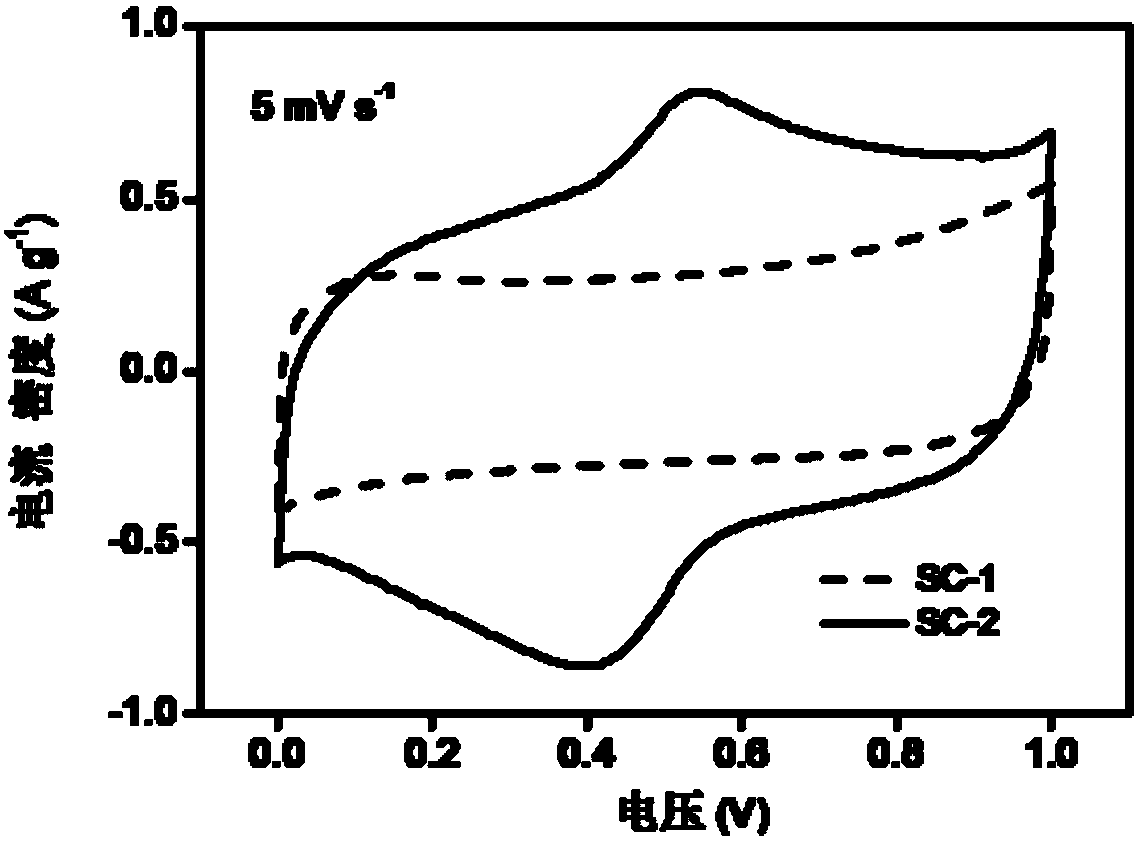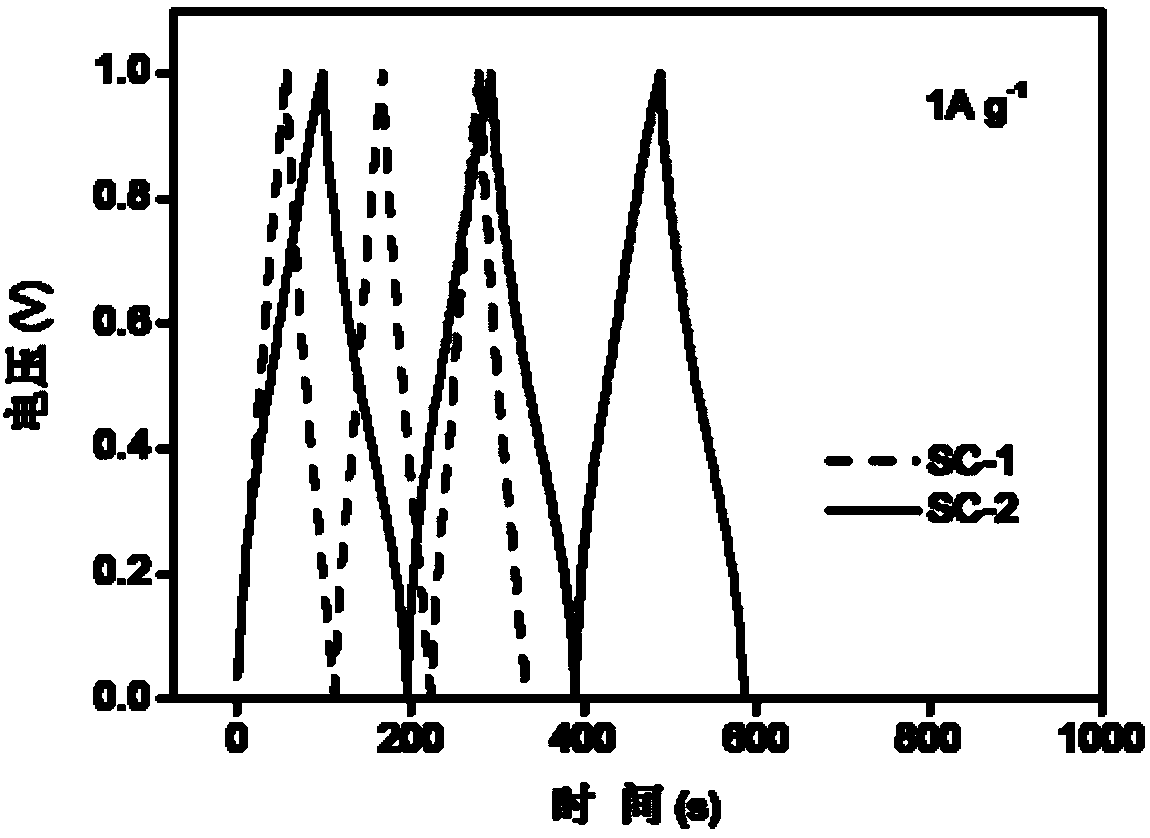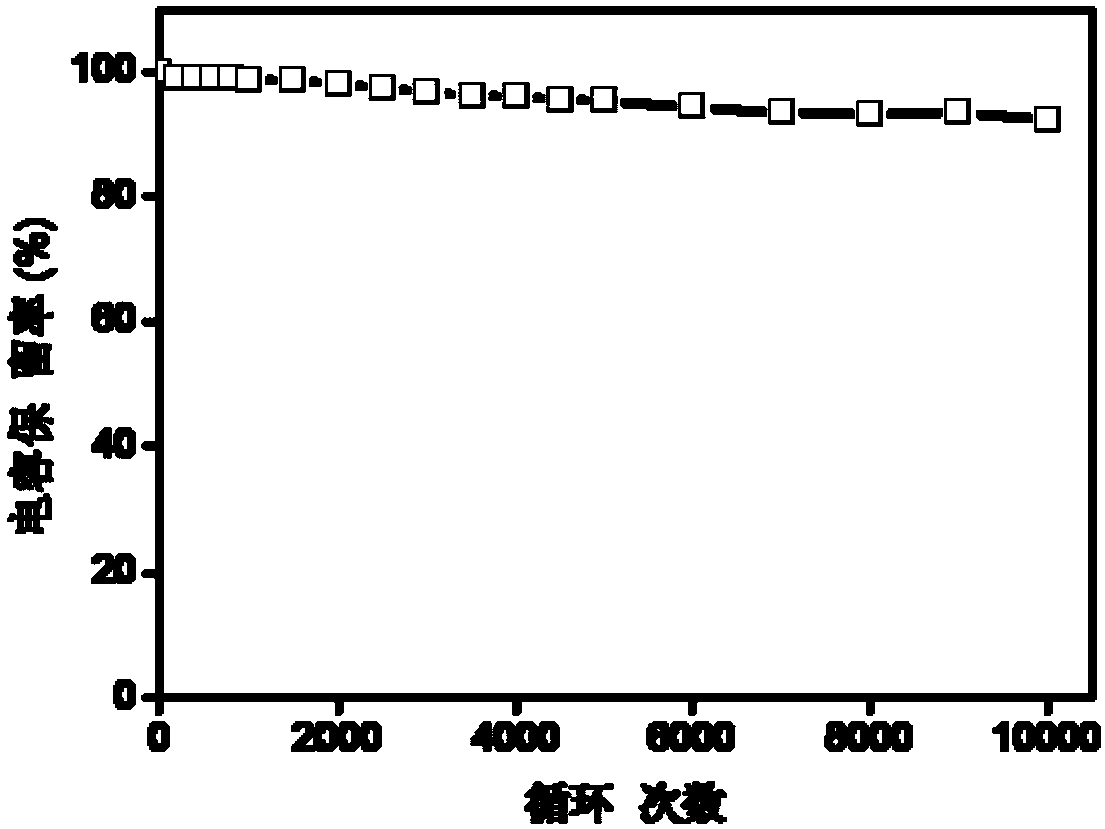Enhanced super capacitor and preparation method thereof
A supercapacitor and electrode technology, which is applied in the manufacture of hybrid/electric double layer capacitors, hybrid capacitor electrodes, hybrid capacitor electrolytes, etc., can solve the problems of not providing capacitor cycle performance test data, poor cycle performance of dihydric phenol, etc., and achieve excellent Cycle charge and discharge stability, improve cycle stability, and improve the effect of capacitor performance
- Summary
- Abstract
- Description
- Claims
- Application Information
AI Technical Summary
Problems solved by technology
Method used
Image
Examples
Embodiment 1
[0054] Take the specific surface area as 2000m 2 g -1 Activated carbon powder is made of carbon-based material, conductive agent (conductive carbon black), binder (water dispersion of sodium carboxymethyl cellulose and styrene-butadiene rubber) according to the solid mass ratio (85:10:2.5:2.5) mixed ball milling The electrode slurry was obtained, which was evenly coated on the graphite sheet by a coating machine, and dried at 120°C for 10 hours to make the electrode active material with a loading capacity of 3mgcm -2 The activated carbon electrode was cut into discs with a diameter of 16 mm for later use.
[0055] Dissolve yellow sodium anthraquinone-2-sulfonate powder in 1mol L at 80°C -1 Sulfuric acid to make redox electrolyte.
[0056] The above-mentioned activated carbon electrode was immersed in the above-mentioned redox electrolyte for 24 hours.
[0057] Separate the impregnated activated carbon electrodes with a filter paper diaphragm, and use 0.012mol L -1 1mol L ...
Embodiment 2
[0062] The active carbon electrode that embodiment 1 is made and contains 0.006mol L -1 1mol L of sodium anthraquinone-2-sulfonate -1 The sulfuric acid electrolyte was assembled into a symmetrical supercapacitor SC-3 according to the method of assembling SC-2, and the constant current charge and discharge test with different current densities was carried out. The experimental results found that at 1A g -1 The mass specific capacitance of supercapacitor SC-3 is smaller than that of SC-2 at current density, which is 78F g -1 . The possible reason is that the concentration of the electroactive substance sodium anthraquinone-2-sulfonate in the electrolyte is not high enough. The Faraday quasi-capacitance improved by sodium is limited, resulting in insufficient mass specific capacitance of the final supercapacitor.
Embodiment 3
[0064] The active carbon electrode that embodiment 1 is made and contains 0.024mol L -1 1mol L of sodium anthraquinone-2-sulfonate -1 The sulfuric acid electrolyte was assembled into a symmetrical supercapacitor SC-4 according to the method of assembling SC-2, and the constant current charge and discharge test with different current densities was carried out. The experimental results found that at 1A g -1 The mass specific capacitance of supercapacitor SC-4 is similar to that of SC-2 at the current density, which is 106Fg -1 . The possible reason is that the activated carbon electrode has a limited amount of adsorption of the electroactive substance anthraquinone-2-sodium sulfonate in the electrolyte, and because the Faraday quasi-capacitance part of the supercapacitor is mainly composed of the electroactive substance anthraquinone-2-sodium sulfonate adsorbed on the electrode. Therefore, when the concentration of sodium anthraquinone-2-sulfonate in the electrolyte exceeds t...
PUM
 Login to View More
Login to View More Abstract
Description
Claims
Application Information
 Login to View More
Login to View More - R&D
- Intellectual Property
- Life Sciences
- Materials
- Tech Scout
- Unparalleled Data Quality
- Higher Quality Content
- 60% Fewer Hallucinations
Browse by: Latest US Patents, China's latest patents, Technical Efficacy Thesaurus, Application Domain, Technology Topic, Popular Technical Reports.
© 2025 PatSnap. All rights reserved.Legal|Privacy policy|Modern Slavery Act Transparency Statement|Sitemap|About US| Contact US: help@patsnap.com



